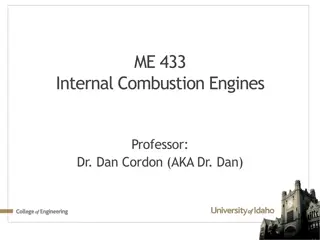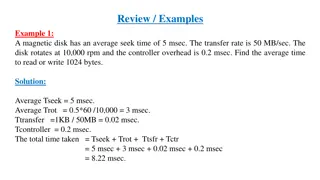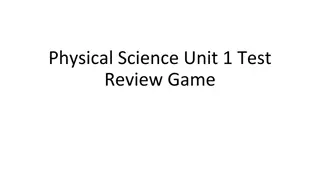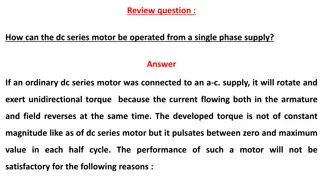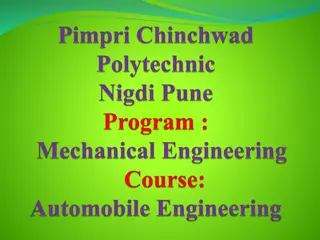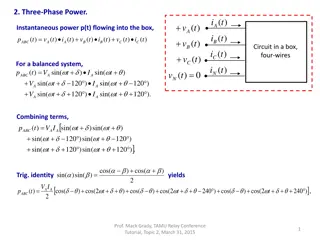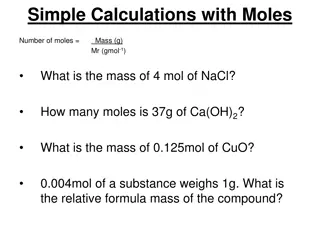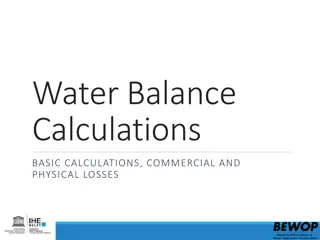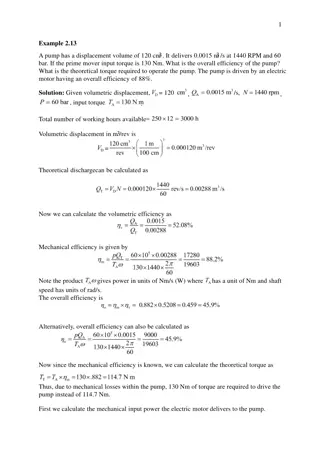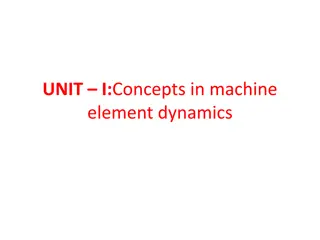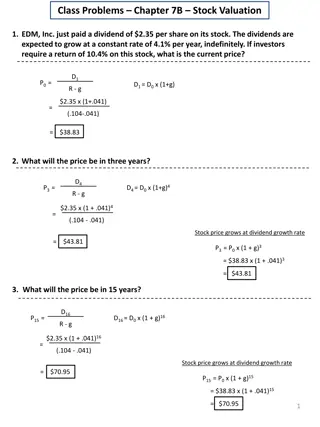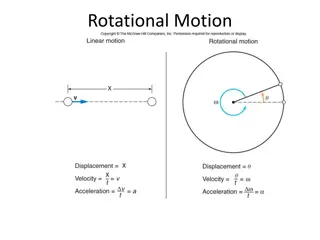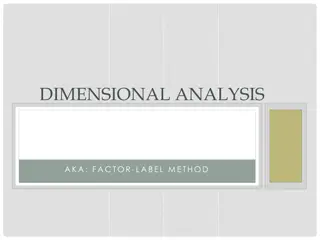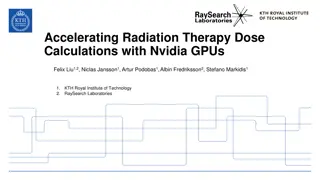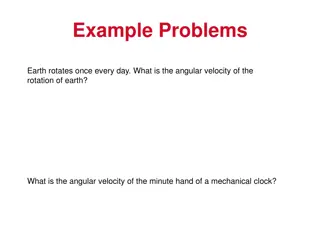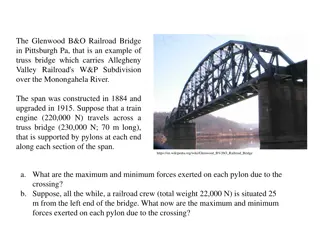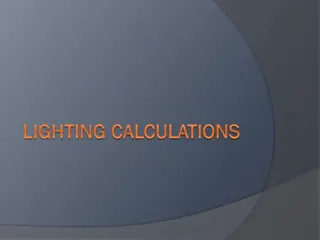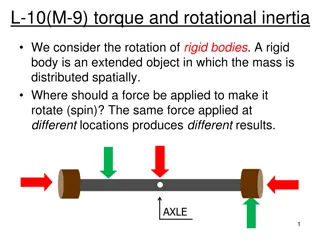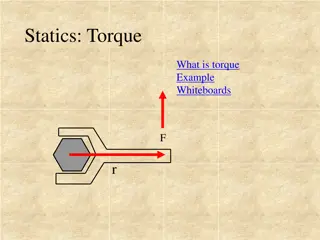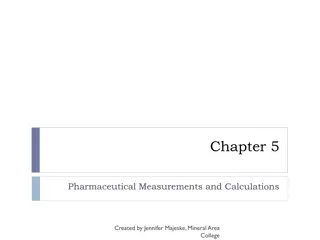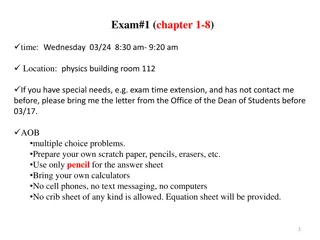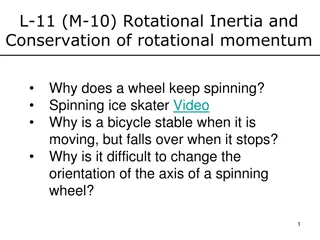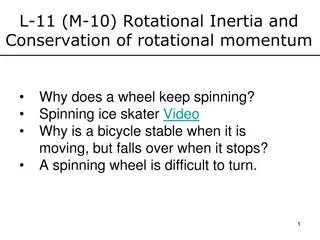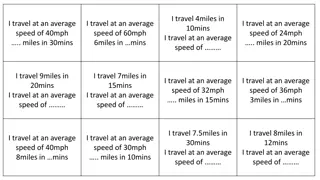Credit Finance Sub-Group and NPRR Updates
Updates from the Credit Finance Sub-Group include discussions on operational NPRRs, new invoice reports, EAL changes, and DC Energy's exposure calculations. The group considered improvements in credit implications, concentration limits, and more. NPRR 1186 was reviewed for enhancements to ESR monito
0 views • 12 slides
Understanding Pharmaceutical Calculations: Altering Product Strength and Solutions
Pharmaceutical calculations involve altering the strength of pharmaceutical preparations by adjusting the proportion of active ingredients, using stock solutions, and problem-solving techniques. This process includes dilution, fortification, and concentration changes to achieve desired product stren
7 views • 23 slides
Understanding Mean Effective Pressure in Internal Combustion Engines
Mean Effective Pressure (MEP) is a crucial parameter in internal combustion engines, representing the average pressure exerted on the piston during the power stroke. MEP is relatively consistent for specific engine types, making it a useful predictor of torque output based on engine type and displac
10 views • 20 slides
Disk Performance Considerations and Calculations
Explore examples of disk performance calculations, including seek time, transfer rate, rotational speed, controller overhead, capacity calculations for platters and cylinders, and total disk capacity. Understand how to calculate average time for reading or writing data, number of platters required f
5 views • 5 slides
Physical Science Unit 1 Test Review Game
This test review game covers various topics in physical science including concepts like floating and sinking, forces, work, inertia, acceleration, and more. It presents multiple-choice questions with explanations related to lifeguard tests, object forces, average force calculations, work calculation
1 views • 71 slides
Operating a DC Series Motor from a Single Phase Supply
Connecting a DC series motor to an AC supply results in pulsating torque due to reversed current flow. This setup leads to inefficiencies and challenges such as eddy current losses and poor power factor. To improve performance, modifications like laminating core structures, using compensated winding
0 views • 23 slides
Understanding Automobile Transmission Systems: Construction and Functions
Automobile transmission systems consist of components like the clutch, gearbox, propeller shaft, and differential, working together to transmit power from the engine to the wheels. The clutch engages and disengages power smoothly, while the gearbox adjusts torque and speed based on road conditions.
0 views • 22 slides
Understanding Three-Phase Power Systems and Instantaneous Power Flow
This detailed content delves into three-phase power systems, analyzing instantaneous power flow, balanced circuits, and trigonometric calculations. It explores the concept of constant three-phase power and provides insights into the analogy of a piston engine with infinite cylinders. The data includ
2 views • 9 slides
Understanding Mole Calculations in Chemistry
Explore various mole calculations in chemistry such as determining mass from moles, moles from mass, and comparing particles in different substances. Learn how to calculate the mass of substances, the number of particles, and perform calculations using balanced equations. Dive into concepts like mol
0 views • 49 slides
Water Balance Calculations and Losses Analysis
Water balance calculations involve assessing commercial and physical losses in a water distribution system. The process includes basic calculations, evaluation of commercial losses such as metering inaccuracies and non-revenue water, as well as physical losses like leakage in transmission lines. Add
0 views • 21 slides
Pump Efficiency and Power Calculation Examples
This content provides detailed calculations for pump efficiency and power requirements in fluid power systems. It covers scenarios involving pump displacement, input torque, electric motor efficiency, volumetric and mechanical efficiencies, and power delivered to loads. The solutions include formula
2 views • 4 slides
Understanding Concepts in Machine Element Dynamics
This unit covers the concepts of D'Alembert principle, precession, gyroscopic couple, inertia force, torque, and dynamic forces associated with accelerating masses in machine elements. Students will learn how these principles affect the equilibrium and behavior of rigid bodies in rotational motion.
1 views • 8 slides
Understanding Primary Clarifiers and Surface Area Calculations
Learn about primary clarifiers used to remove particles in water treatment processes with different types and calculations. Dive into surface area calculations for rectangles, including converting inches to feet for accurate measurements. Practice solving surface area problems for practical applicat
7 views • 21 slides
Understanding Torque and Horsepower in Mechanics
In the world of mechanics, understanding torque and horsepower is essential. Torque, measured in pounds-feet, represents the rotational force exerted on an object, while horsepower, coined by James Watt, signifies the power output of a machine. By measuring torque and RPM, one can calculate horsepow
0 views • 7 slides
Stock Valuation Analysis and Calculations
The given content discusses various stock valuation scenarios involving dividend payments, growth rates, and required returns on investments. It covers calculations for determining current stock prices, future prices, dividend yields, and required returns based on different company scenarios. Exampl
0 views • 7 slides
Understanding Lattice Constants in Materials Using DFT Calculations
Using Density Functional Theory (DFT) calculations, we explore how to determine the lattice constant of simple cubic, face-centered cubic (fcc), and hexagonal close-packed (hcp) materials. By fitting numerical data and analyzing energy considerations, we predict lattice constants for various metal s
0 views • 17 slides
Understanding Paycheck Calculations in Financial Algebra
Learn about different pay periods, hourly rates, and overtime calculations in financial algebra to ensure accurate paychecks. Explore examples of biweekly, semimonthly, and weekly pay calculations, as well as overtime rates. Understand how to determine annual salaries based on different pay frequenc
0 views • 13 slides
Open Heavy-Flavour Production in pp Collisions at the LHC - Physics Seminar Overview
Physics seminar presentation by Francesco Prino on open heavy-flavour production as a function of multiplicity in pp collisions at the Large Hadron Collider (LHC). The talk covers the motivation behind studying heavy-flavour production mechanisms, data analysis techniques, results on the multiplicit
0 views • 65 slides
Understanding Rotational Motion in Physics
Exploring rotational motion in physics involves understanding angular velocity, torque, moment of inertia, and rotational kinetic energy. This comprehensive guide covers concepts such as the conversion between degrees and radians, angular variables, Newton's second law for rotating bodies, and momen
0 views • 18 slides
Mastering Dimensional Analysis for Medication Calculations
Enhance your understanding of Dimensional Analysis (DA) for precise medication dosage calculations with a focus on its practical application in medication administration. Discover the benefits, importance of safety support, evidence supporting DA, and key conversions and abbreviations to remember fo
0 views • 19 slides
Understanding DRV8846 Winding Waveform and System Design Input Parameters
Explore the DRV8846 winding waveform and system design input parameters including VM, Vref, Imax, Torque DAC, RL, Rsense, and Ichop calculations. Questions arise regarding waveform stability, current saturation, and appropriate settings for optimal motor performance.
0 views • 6 slides
Understanding Tug of War Battle Bots: Concepts of Gear Ratio and Torque
Explore the exciting world of Tug of War Battle Bots where teams design vehicles for maximum pulling power. Learn about friction, torque, and gear ratio while modifying robots to compete in a thrilling tug of war challenge. Discover how gears, motors, and physics concepts play a crucial role in opti
0 views • 16 slides
Accelerating Radiation Therapy Dose Calculations with Nvidia GPUs
Accelerating Radiation Therapy Dose Calculations with Nvidia GPUs by Felix Liu, Niclas Jansson, Artur Podobas, Albin Fredriksson, and Stefano Markidis discusses the utilization of GPU technology to improve efficiency in radiation treatment planning. The process involves creating patient-specific tre
0 views • 18 slides
Understanding Angular Velocity, Torque, and Conservation of Angular Momentum in Physics
Earth's angular velocity, minute hand rotation, torque calculations, application of torque in balancing seesaws, motion equations, and car deceleration scenarios are explored. Concepts like rotational inertia, kinetic energy, and conservation of angular momentum are discussed, providing a comprehens
0 views • 6 slides
Geometry Concepts and Calculations Practice Questions
This content covers various topics in geometry, including decimal and fraction conversions, percentage calculations, along with missing angle calculations. It offers practice questions for students to enhance their understanding of geometry concepts.
0 views • 11 slides
Understanding Structural Forces in Bridges and Cranes
Truss bridge and tower crane scenarios are explored, involving calculations of forces on pylons, balance points, torque analysis, and load lifting capacities. The content also delves into the mechanics of a ladder against a wall and the stresses on the lower back during bending and lifting activitie
0 views • 9 slides
Understanding Lighting Calculations for Effective Illumination
Lighting calculations play a crucial role in determining the optimal lighting levels for various spaces. The Lumen Method and Point Calculations help evaluate illumination requirements, while factors like Light Loss Factor and Coefficient of Utilization ensure efficient lighting design. Learn how to
0 views • 13 slides
Understanding Torque and Rotational Inertia in Rigid Bodies
In the realm of rigid bodies, the application of force at specific points is crucial for inducing rotation. Torque, denoted by the Greek letter tau, is the product of the force and the lever arm length, determining the rotational effect. By grasping the concept of torque and its applications, one ca
0 views • 22 slides
Understanding Torque in Mechanics
Explore the concept of torque in mechanics, which is a twisting force that can cause angular acceleration. Learn how to calculate torque by multiplying the distance from the rotation center and the applied force, and understand the importance of the angle between force and distance. Discover practic
1 views • 9 slides
Pharmaceutical Measurements and Calculations in Pharmacy
Understanding pharmaceutical measurements and calculations is crucial for pharmacy technicians to prevent calculation mistakes with serious consequences. This article covers the systems of measurement used in pharmacy, including the Metric System, basic math fundamentals necessary for pharmacy work,
0 views • 40 slides
Mechanics Exam Preparation Guide
Mechanics exam preparation guide covering topics such as center of gravity, torque calculations, rotational inertia, and Newton’s second law. Includes practice questions and demonstrations to help you understand key concepts. Prepare with your own materials and follow exam guidelines closely to en
0 views • 24 slides
Understanding Rotational Inertia and Conservation of Momentum
Rotational inertia symbolized as I is crucial in quantifying the torque needed for rotation, depending on mass distribution. Torque, rotational inertia, and mass influence an object's spinning motion, affecting stability and speed. Exploring why wheels keep spinning, ice skaters rotate faster when a
0 views • 23 slides
Understanding Rotational Inertia and Torque in Physics
Rotational inertia symbolizes how difficult it is to change the rotation of an object. It depends on mass distribution from the axis, shape, and mass. Torque needed to start rotation is proportional to rotational inertia. Smaller rotational inertia leads to faster rotational acceleration. Examples a
0 views • 23 slides
Physics Concepts Overview
This content covers various topics such as speed calculations, density, and pressure in physics. It includes examples of speed calculations for different distances and times, density calculations for different substances, and pressure calculations for rectangular sheets exerting force on tables. The
0 views • 7 slides
Pharmaceutical Calculation and Compounding Course Overview
This course provides pharmacy students with a foundation in pharmaceutical calculations including concentration expressions, density, isotonicity, and more. The curriculum focuses on practical skills essential for pharmacy practice. Students will learn how to handle medicinal prescriptions and perfo
2 views • 46 slides
Understanding Mole Calculations and Its Applications
Dive into the world of mole calculations with Chapter 5 homework assignments, exploring concepts such as mole weight, the dozen concept, and sweet mole calculations. Discover the significance of moles in chemistry and how they relate to everyday scenarios like calculating the weight of eggs and unde
1 views • 28 slides
Pressure Wave Calculations in Cryogenic Systems
Presentation on pressure wave calculations by R. Rabehl regarding potential differential longitudinal pressure issues in cryogenic systems, specifically related to changing valve positions and their impact on cold masses. The calculations involve dynamic pressure surges using water hammer calculatio
0 views • 6 slides
Understanding Rotational Dynamics in Physics
General announcements for a physics class covering topics on rigid bodies, torque, moment of inertia, and rotational Newton's second law. Learn about the importance of moment of inertia, calculating rotational inertia, and the application of Rotational N2L in problem-solving exercises. Explore the r
0 views • 21 slides
Understanding Equilibriums in Physics
Equilibrium in physics refers to the state of a body where there is no change in translational or rotational motion. This state can be classified into static equilibrium (when total force and torque are zero) and dynamic equilibrium (when a body is in uniform motion with zero resultant force and tor
0 views • 9 slides
Understanding Servo Torque Mode Training by Jim
Dive into the world of servo torque mode training with Jim as your guide. Explore the principles, applications, and settings involved in torque control mode for various machines like printing presses and winding machines. Learn about internal and analog torque command inputs, torque limits, and more
0 views • 15 slides


